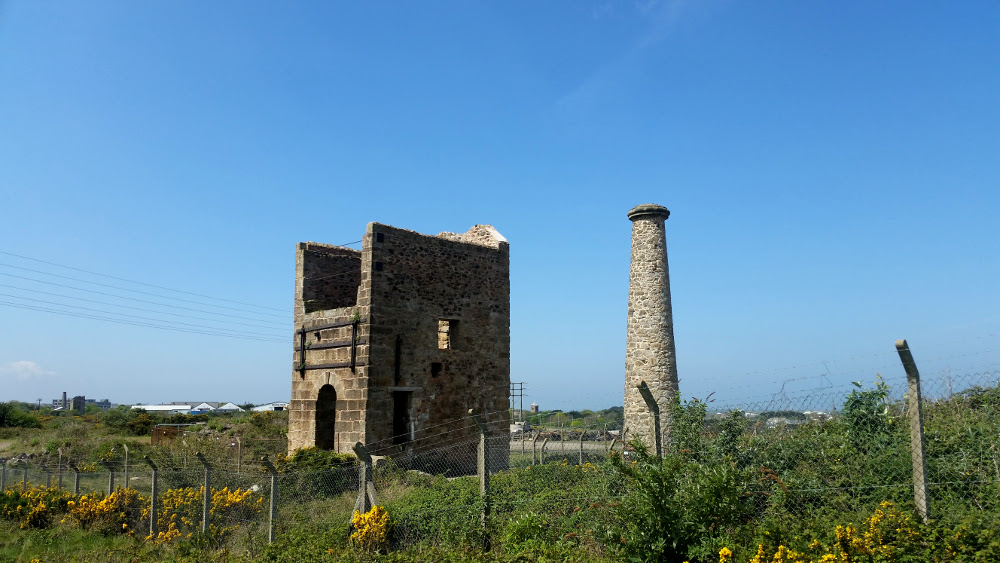Old Cook’s Kitchen Mine in Pool, Redruth is a fine example of a very rich, very deep and very long lived workings. Bound by Dolcoath to the west, Tincroft to the east and South Crofty in the North, official work started at the end of the 1600’s and start of the 1700’s. Between 1710 and 1730, Brea Mine and Wheal-an-Care Mine opened together under the name Cook’s Kitchen, a name that is said to derive from a miner commenting that the lode was a similar size to his kitchen. Unfortunately there are few records from before 1760, as they were destroyed by mine agents. The period between 1763-77 saw a depression in the area due to Anglesey copper mine, however while this had disastrous effects on many of it’s neighbours, Cook’s Kitchen soldiered on through and even had good sales. During this time, the mine was using at least 13 shafts.
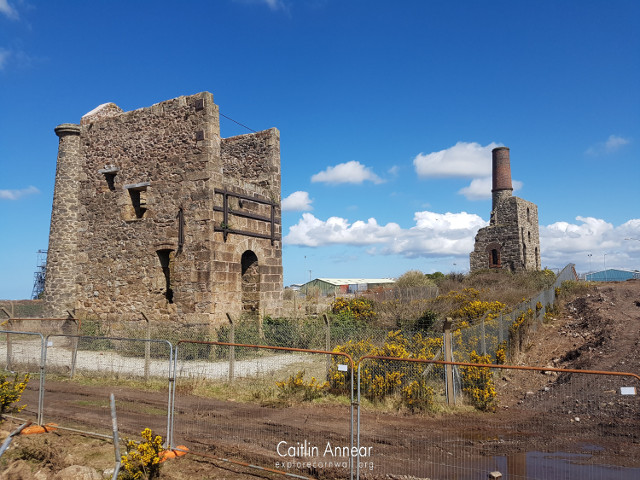
In the 1790, the mine was employing 340 people and continued to make excellent profits, making over £1,600 some months. Some of its best ore was producing 90% copper and sold for over £30 a ton, over three times the standard price at the time. Parts of the North Lode had reached 50′ in width.
The later part of the decade saw the mine fluctuate from rich to poor, with large sections of poor ground cropping up between the fresh sections of copper. However by May 1799, the mine was again at breaking point.
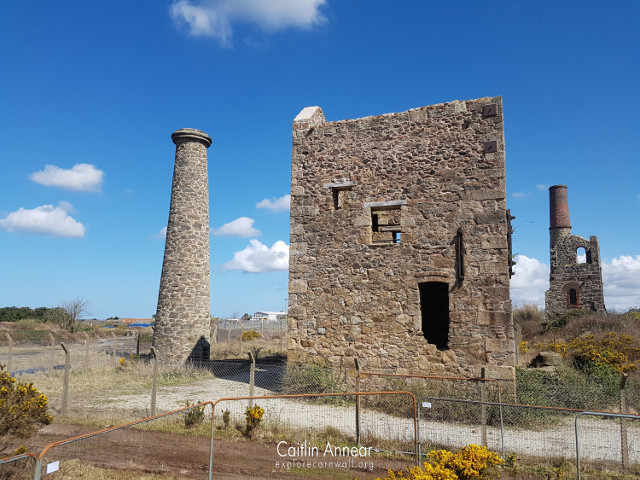
By 1819 the mine was up and going again, having reached 160 fathoms (below adit) and utilised a number of pieces of equipment, including two whims, a 36″ pumping engine and had a waterwheel on each side. The eastern wheel worked underground alongside the pumping engine, with the other on the western Red River side. Although a small amounts of tin had been found before, it was in 1835 that larger discoveries were made. In 1837, a branchline of the Hayle to Portreath railway reached the site, joining the main line at Cook’s Kitchen.
The mine closed again in 1848, reopening a year later with tin production taking over from copper. The mine continued to struggle, making fewer profits. In 1872, the whole sett was divided into two, with the northern section becoming New Cook’s Kitchen and the southern railway side forming Old Cook’s Kitchen (New Cook’s was later bought by South Wheal Crofty in 1899).
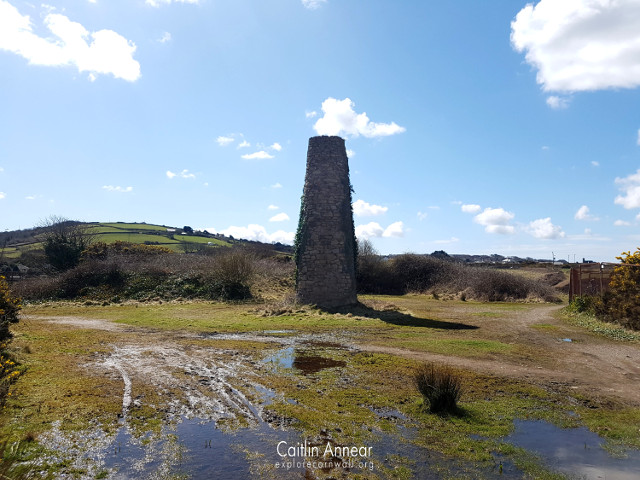
In 1872, the whole sett was divided into two, with the Northern section becoming New Cook’s Kitchen and the Southern railway side forming Old Cook’s Kitchen (New Cook’s was later bought by South Wheal Croft in 1899). In 1895, the mine sett was amalgamated with it’s southern neighbour Tincroft, with Carn Brea being added to the fold the following year. This group was rebranded as Carn Brea & Tincroft Mines Ltd. The entire venture closed for the final time in 1913.
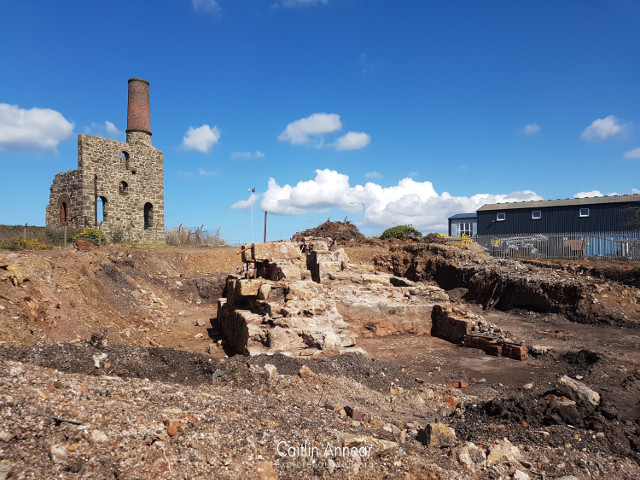
There are few prominent remains left on the Cook’s Kitchen site. The largest structures are those of Chapple’s 55″ pumping engine and 26″ whim. The engine house was originally built in 1838 to house a 50″ engine, but this was replaced by a 55″ engine in 1872. It’s boiler house would have stood on the eastern side near the free standing chimney, which is now only two thirds of its original size. The whim was built in 1860 and hoisted using an old fashioned kibble, making it much less efficient than others at the time. Its boiler house would have stood on the northern side.
The recently uncovered remains on the southern side of the whim is that of the 1871 horizontal engine. This was used to drive the man engine, replacing the older one. Closer to the western side of the site is the remains of the arsenic stack, which originally would have been surrounded by the now buried dressing floor.
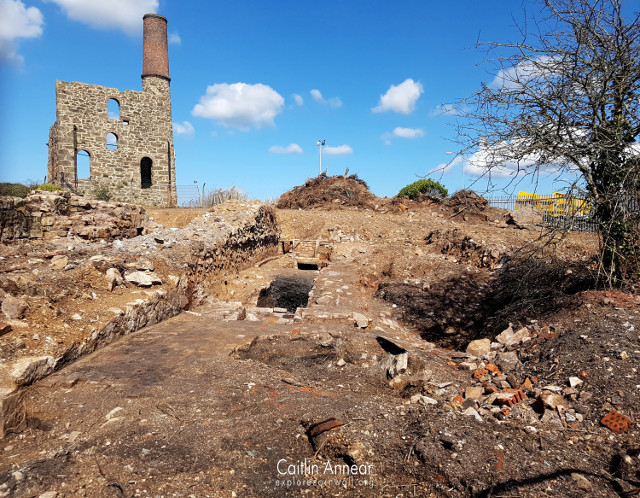
Like many of the other prosperous mines in the area, Cook’s Kitchen had numerous shafts, some of which were renamed over time.
Chapples (430-fathoms/786m), Dunkin’s Manengine, East Sump, East Sump whim, Great Engine, Middle, Horizontal, William’s (270-fathoms/494m), Dunkin’s (190-fathoms/347m), Mias, Old East, Blight’s, Bramble’s, Machine and Water.
A total of four lodes were worked on the mine, including Middle, Eudy’s, Chapple’s and Dunkin’s.
1815-1897
40,920 tons of copper, 120 tons of arsenic and 222 tons of arsenical pyrite, although this can’t be a complete reflection of its output.
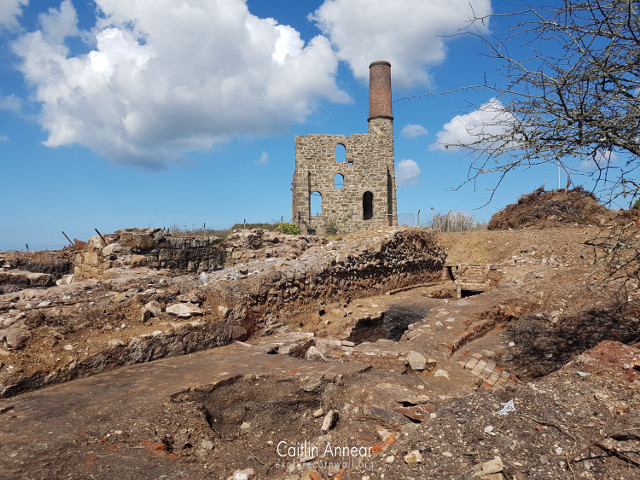
Engine Houses
1794 – Boulton and Watt on Engine shaft
1789 – 3 x Harvey’s engines
>1819 – 2 x 15″ whims
>1819 – 36″ pumping engine
>1819 – 54″ waterwheel, with another of similar size
1838 – 50″ pumping engine on Chapple’s shaft
1859 – 52″ man engine on Dunkin’s shaft
1860 – 26″ whim on Chapple’s shaft
>1865 – 50″ pumping engine
>1865 – 25″ whim engine
>1865 – 18″ whim engine
>1865 – 26″ stamps engine
>1865 – 6 x waterwheels
1871 – 26″ Harvey’s horizontal engine
1872 – Chapple’s pumping engine resized to 55″
1880 – compressor house for rock drills
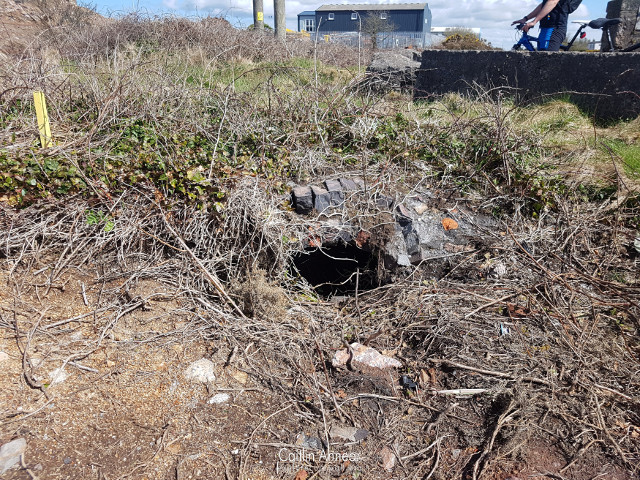
There is no official right of way onto the Old Cook’s Kitchen site, however there are a number of footpaths leading up from the river and the neighbouring road where you can view the engine houses through the fence. Strongbow, the company that recently bought neighbouring South Crofty have said that they intend to fix the site up, including excavating the remains of the horizontal engine in the photo above.
There is no official parking for this site, although there may be small places to pull in along the road.
Brown, K. and Acton, B. (2007) Exploring Cornish Mines: Volume Two. 2nd edn. Truro: Landfall Publications.
Buckley, A. (1997) South Crofty Mine. Truro: Truran.
Cornwall Archaeological Unit (1997) South Crofty and Cooks Kitchen: Shaft Capping Report. Available at: http://map.cornwall.gov.uk/reports_event_record/1997/1997R036.pdf (Accessed: 17 March 2018).
Dines, H. G. (1956) The metalliferous mining regions of south-west England. British Geological Survey.
Hamilton-Jenkin, A. K. (1963) Mines and Miners of Cornwall: X Camborne. Truro: Truro Bookshop.
Nance, D. and Brown, K. (2014) A complete guide to the engine houses of West Cornwall. Gloucestershire: Lightmoor Press.
